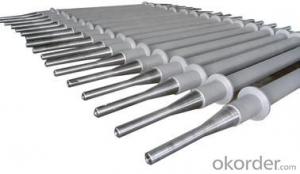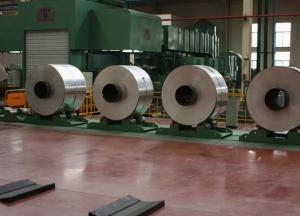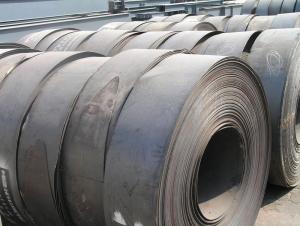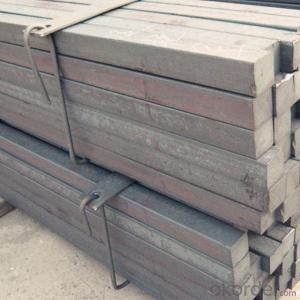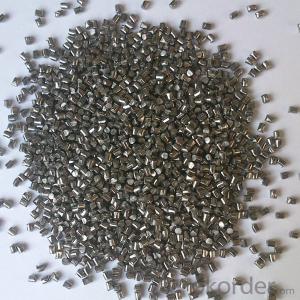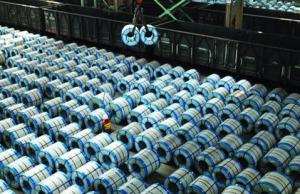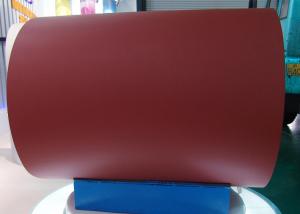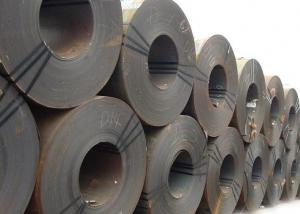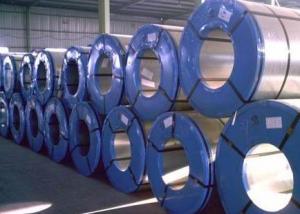Centrifugal Casting Heat Resistant Furnace Roll
- Loading Port:
- Tianjin
- Payment Terms:
- TT OR LC
- Min Order Qty:
- 1000 PCS
- Supply Capability:
- 10000 PCS/month
OKorder Service Pledge
OKorder Financial Service
You Might Also Like
Quick Details
| Condition: | New | Type: | Other | Usage: | Heat Treatment Furnace |
| Place of Origin: | (Mainland) | Brand Name: | Dimension(L*W*H): | OD70 to 1400mm | |
| Weight: | depend on size and material | Certification: | ISO9001:2008;SGS | Warranty: | 12 months |
| After-sales Service Provided: | Overseas third-party support available | Application: | continuous annealing furnace, heating treatment furnace, etc | Material: | heat resistant alloys, cobalt base alloys |
| Standard: | ANSI, ASTM, ASME, DIN, GB | Test: | PT UT RT | Technics: | Centrifugal casting/spun casting |
| Advantage: | Experienced staff ,complete inspection facility to assure quality |
Packaging & Delivery
| Packaging Detail: | seaworthy wooden case ,or as per buyers' need. |
| Delivery Detail: | according to contract and quantity. |
Specifications
Furnace roll
1.Standard:ANSI, ASTM, ASME, DIN, GB
2.Certificate: ISO9001:2008
3.Size: according to drawing.
centrifugal casting heat resistant furnace roll for CAL and CGL
Product name | Furnace roll |
Material | High nickel and high chrome heat resistant alloys, cobalt base alloys, like HU, HT, HK, HP, HW, 24/24NbTiZr, 50Cr/50Ni (2.4813), 1.4865, 1.4849, 1.4848, 1.4410, 1.4059, 1.4841, 1.4845, 1.4852, 2.4879 or as per customer's requirements
|
Application | Working at high temperature environment on average: 800 to 1200°C,used in steel mills like continuous annealing furnace, heating treatment furnace, etc. |
Process | Barrel/tube is made by centrifugal casting and will be machined subsequently. Shaft/journal will be |
Standard | ANSI, ASTM, ASME, DIN, GB |
Specification | According to drawings |
Certificate | ISO9001:2008 |
Packaging & Shipping
sea worthy packaging, wooden case or according to requirements
Our Services
1.More than 30 years of experience in metallurgical industry and R&D department enable us to offer you products with
best quality and price.
2.Highly professional staff and complete inspection facility to guarantee the quality.
3.Attach great importance to sales and customer service.
4.To assure the delivery time, we can work 24 hours a day by 3 shifts and seven days a week.
- Q:How are steel bars used in reinforcing concrete structures?
- Steel bars, also known as rebars, are used in reinforcing concrete structures to enhance their strength and durability. These bars are typically placed in a grid-like pattern within the concrete to provide additional tensile strength, as concrete is strong in compression but weak in tension. The steel bars act as a reinforcement, absorbing the tensile forces that concrete cannot handle effectively. This combination of steel and concrete creates a composite material that can withstand a greater amount of load, making the structure more resistant to cracking and structural failure.
- Q:What are the different types of steel roofing systems?
- There are several types of steel roofing systems, including standing seam, corrugated, and metal shingle roofs.
- Q:What are the different types of steel beams used in building structures?
- There are several types of steel beams commonly used in building structures, including I-beams, H-beams, and wide flange beams. I-beams, also known as W-beams, have a cross-section shaped like the letter "I" and are commonly used in residential and commercial construction. H-beams, also known as H-shaped beams, have a cross-section shaped like the letter "H" and are often used in bridge construction. Wide flange beams, also known as W-flange beams, have a wider flange than I-beams and are commonly used in industrial and commercial construction.
- Q:How is steel used in the production of construction machinery and equipment?
- Steel is widely used in the production of construction machinery and equipment due to its strength, durability, and ability to withstand heavy loads. It is utilized in various components such as frames, chassis, buckets, and booms, providing the necessary structural integrity and stability required for these machines to operate effectively in demanding construction environments. Additionally, steel's versatility allows for easy fabrication and customization, enabling manufacturers to create complex and intricate designs that meet specific requirements.
- Q:How is steel used in the railway industry?
- Steel is used in the railway industry for various purposes such as manufacturing tracks, locomotives, and rolling stock. It provides strength, durability, and resistance to wear and tear, making it ideal for withstanding the heavy loads and constant movement associated with railway operations. Additionally, steel is used in the construction of bridges, tunnels, and other infrastructure components to ensure their stability and longevity.
- Q:How are steel products used in the aerospace and aviation industry?
- Steel products are extensively used in the aerospace and aviation industry for various purposes. They are commonly used in the construction of aircraft frames, landing gear, engine components, and other structural components. Steel's high strength-to-weight ratio makes it ideal for these applications, ensuring the durability and safety of the aircraft. Additionally, steel is often utilized in the manufacturing of tools and equipment used in the maintenance and repair of aircraft.
- Q:What are the applications of steel gratings in industrial walkways?
- Steel gratings have numerous applications in industrial walkways due to their durability, strength, and versatility. They provide a safe and reliable flooring solution for workers to navigate through different areas of an industrial facility. Steel gratings are commonly used in industrial walkways to enhance traction, prevent slips and falls, and ensure worker safety. Additionally, they are resistant to corrosion, can withstand heavy loads, and are easy to clean and maintain. Overall, steel gratings are an essential component in industrial walkways as they provide a sturdy and secure surface for workers to move around efficiently and safely.
- Q:What are the advantages of using steel bars in construction?
- There are several advantages of using steel bars in construction. Firstly, steel bars are incredibly strong and durable, providing structural integrity to buildings and ensuring they can withstand heavy loads and adverse weather conditions. Additionally, steel bars have a high tensile strength, allowing for longer spans and lighter structures, which can lead to cost savings in terms of materials and construction time. Moreover, steel bars are resistant to fire, corrosion, and pests, making them a reliable choice for long-term durability. Lastly, steel bars can be easily fabricated and customized to meet specific design requirements, offering flexibility and versatility in construction projects.
- Q:How is steel used in the construction of high-rise buildings?
- Steel is commonly used in the construction of high-rise buildings due to its strength, durability, and flexibility. It is used as the primary structural material, providing a sturdy framework that can withstand the weight and forces exerted on tall buildings. Steel beams and columns are used to support the floors, walls, and roof, allowing for open and spacious interior designs. Additionally, steel is utilized in the construction of elevator shafts, stairwells, and other critical components of high-rise buildings, ensuring their stability and safety.
- Q:How is steel used in the manufacturing of machinery and equipment?
- Steel is commonly used in the manufacturing of machinery and equipment due to its strength, durability, and versatility. It is used to construct the structural framework of machines, as well as components such as gears, shafts, and bearings. Its ability to withstand high temperatures, corrosion, and heavy loads makes it ideal for manufacturing equipment that requires strength and reliability. Additionally, steel can be easily shaped, welded, and machined, allowing for the production of complex machinery and equipment.
1. Manufacturer Overview |
|
|---|---|
| Location | |
| Year Established | |
| Annual Output Value | |
| Main Markets | |
| Company Certifications | |
2. Manufacturer Certificates |
|
|---|---|
| a) Certification Name | |
| Range | |
| Reference | |
| Validity Period | |
3. Manufacturer Capability |
|
|---|---|
| a)Trade Capacity | |
| Nearest Port | |
| Export Percentage | |
| No.of Employees in Trade Department | |
| Language Spoken: | |
| b)Factory Information | |
| Factory Size: | |
| No. of Production Lines | |
| Contract Manufacturing | |
| Product Price Range | |
Send your message to us
Centrifugal Casting Heat Resistant Furnace Roll
- Loading Port:
- Tianjin
- Payment Terms:
- TT OR LC
- Min Order Qty:
- 1000 PCS
- Supply Capability:
- 10000 PCS/month
OKorder Service Pledge
OKorder Financial Service
Similar products
New products
Hot products
Related keywords
